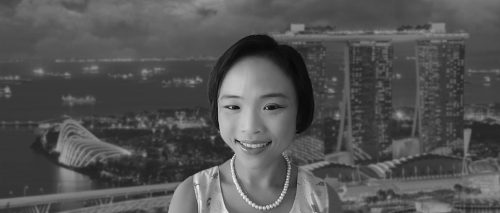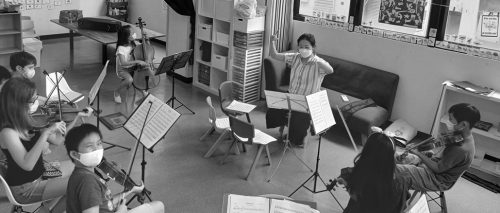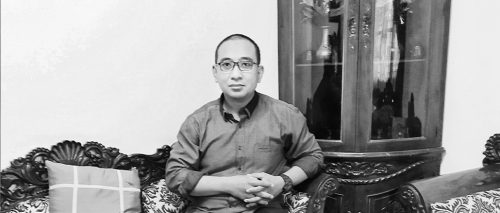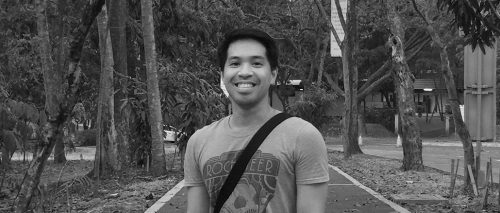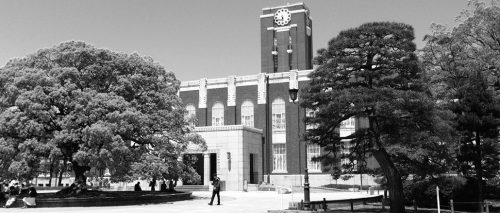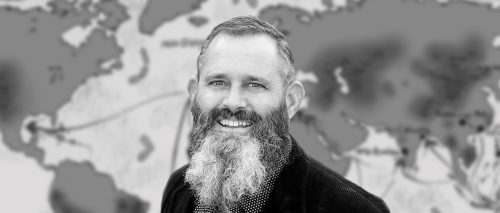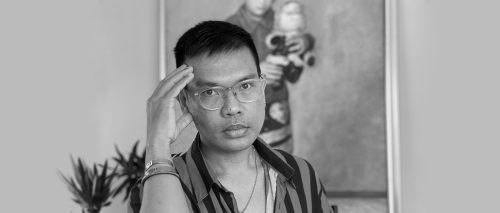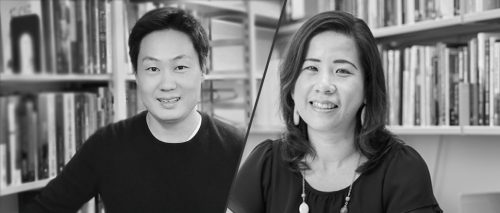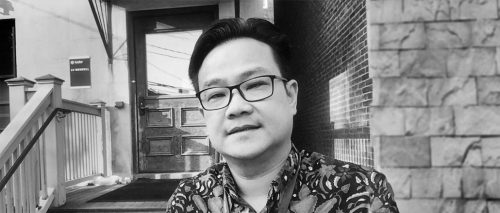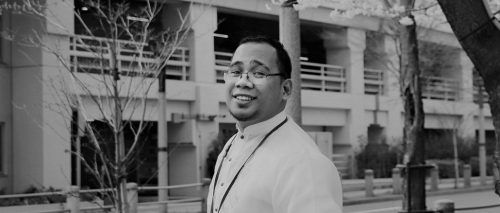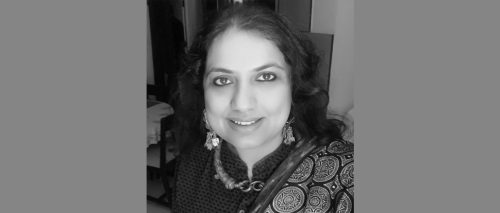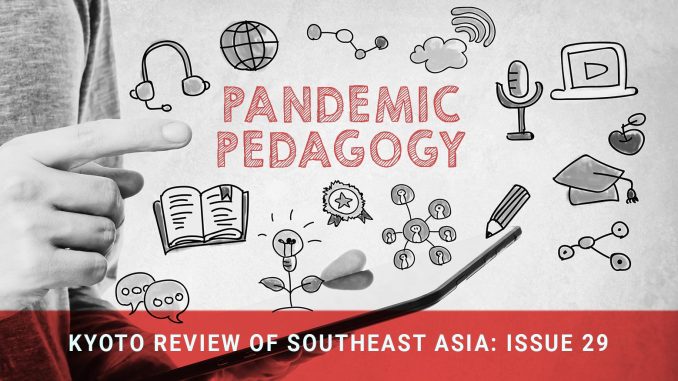
The COVID-19 pandemic is a global crisis that has caused an unprecedented disruption of the foundational institutions in the public health and economic sectors. Given that 190 countries have mandated the complete or partial closure of schools – a measure that has affected more than 1.7 billion students worldwide (World Bank 2020) – it is important to underscore that the pandemic should also be considered a global educational crisis. Audrey Azouley, the Director-General of UNESCO, has declared that COVID-19 has caused “the most unprecedented disruption in the history of education.“ (UNESCO 2020: iii).
Educational institutions around the world have responded by implementing measures with the intent of maintaining the continuity and inclusiveness of their programs while safeguarding the interests of public health. 1
This special issue gathers personal reflections on the complexities and possibilities of pandemic pedagogical practices as they have been deployed by educators in East and Southeast Asia. The contributors were asked to respond to four themes, as follows:
- How has the sudden shift to distance learning affected pedagogical effectiveness, such as in curricular design, content delivery and safeguarding the welfare of students?
- What kinds of disparities has the adoption of distance learning revealed or exacerbated among students and faculty, such as in the access to online platforms, and in the digital fluency in which curricular content is disseminated and consumed?
- How has ‘immersion denial’ impacted upon the cultivation of a vibrant campus community for both students and faculty?
- How has the pandemic influenced the policies of university administrations, such as those pertaining to enrollments, student services, faculty promotion/development, staff training and departmental restructuring?
In a world that would otherwise be defined by the dynamic circulation of capital and people, ‘pandemic pedagogy’ refers to a mindset in which educators have adapted to the sudden major upheaval of our temporal and spatial agencies. Quarantine and social distancing measures have reconfigured our sense of geography, effectively redefining our ontologies as socialized beings (Leader 2020). At the same time, many of us live through the crisis with an altered sense of time, characterized by the uncertainty of when we can resume some semblance of the professional routines we once knew. Amidst the declarations that these new spatial and temporal conditions constitute ‘the new normal,’ our predicament may well be described by what anthropologist Ghassan Hage called a perpetual “stuckedness”: “Rather than being perceived as something one needs to get out of at any cost, it is now also experienced, ambivalently, as an inevitable pathological state which has to be endured” (Hage 2009: 90).
On a practical level, pandemic pedagogy refers to the contingent problem-solving and troubleshooting mentalities required in the (re)design and adaptation of curricula to new formats and timeframes. As a facet of this mindset, educators have also had to implement measures aimed at alleviating feelings of isolation, fatigue and anxiety among students and faculty. Pandemic pedagogy, as such, is not just about the shift in the format of conducting one’s classes. In essence, it is an attitude to teaching that entails a realignment of conventional performance indicators, such that what is considered ‘effective pedagogy’ is measured by how well we can orient technologically-mediated learning platforms towards achieving the twin aims of teaching continuity and learning inclusion. These reflections may provide us with an opportunity to reconsider the present and future of education in Asia, and how our educational institutions can continue to play a role in the global knowledge economy.
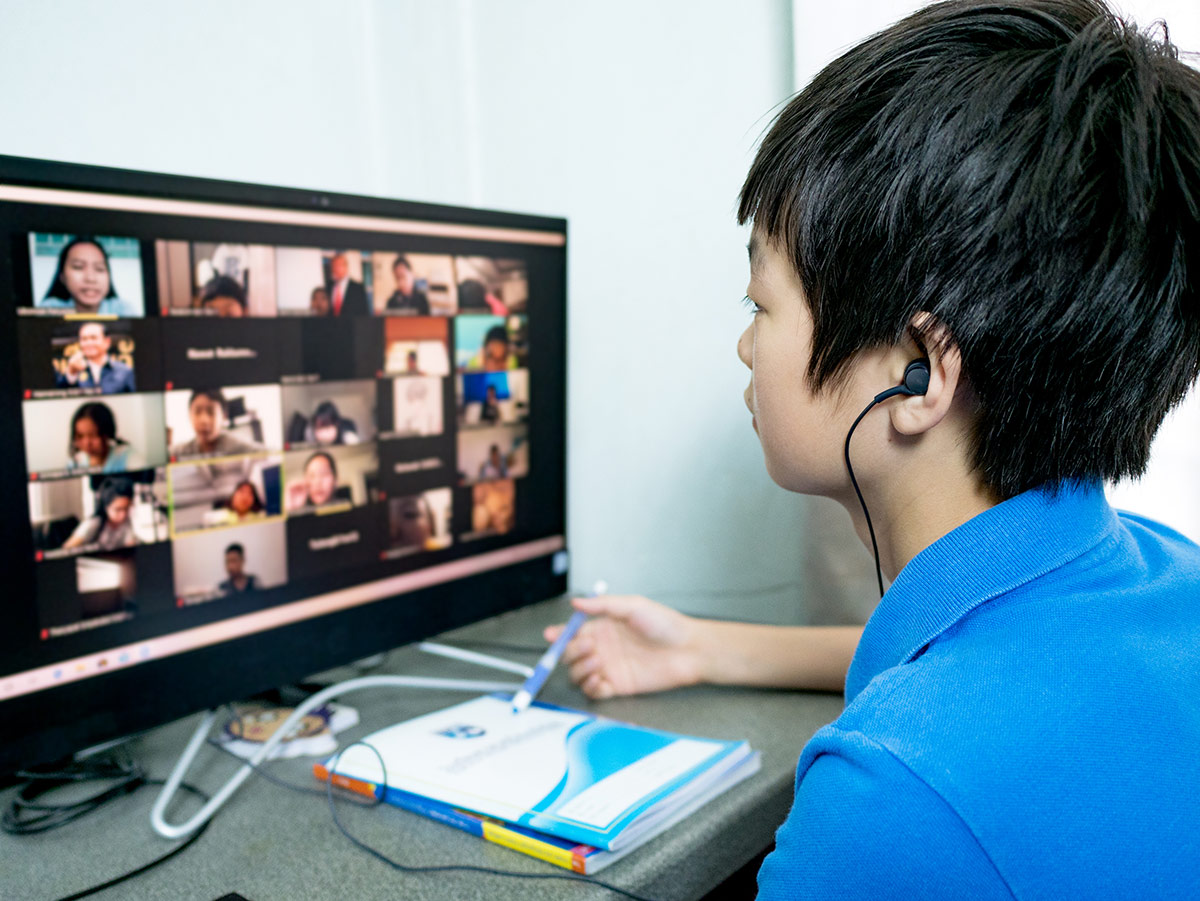
Open and Distance Learning: Confronting Mental Health Challenges
A major theme that emerged from the reflections is the challenge of adapting to the unavoidable shift to Open and Distance Learning (ODL) which, in the context of the pandemic, is implemented as a mode of Emergency Remote Teaching (ERT) (Hodges et.al. 2020). The characteristic feature of this shift is that it is done without the requisite preparatory requirements, such as testing viable online platforms, evaluating and responding to previous student feedback and assessing relevant pedagogical research. In crisis situations, this is compounded by the fact that students and faculty have generally been unable to rely on technical support personnel to offer adequate instruction or troubleshooting. As such, it has been common for educational institutions during the pandemic to adopt ODL in spite of a high risk of suboptimal implementation.
Technical difficulties aside, the most pressing issue that was raised by the contributors was the mental health challenges faced by students who found themselves confined to their homes. Various studies have already demonstrated that ‘immersion denial’ can have extremely negative effects on the overall well-being of students (Cacciopo and Cacciopo 2018; Westrup 2014). The closure of educational facilities has prevented access to the support mechanisms designed to address these issues. Even within synchronous online classes, where students are usually allowed to turn off their cameras, a dehumanized ‘false intimacy’ exacerbates feelings of isolation and anxiety (Petriglieri 2020). A World Economic Forum survey of more than 68,000 people aged 16-35 in ASEAN found that about 70 per cent identified the sense of isolation from working or studying remotely as the most significant impact of COVID-19 (WEF 2020: 4).
How have educators configured ODL in light of the strains on mental health? Southeast Asian scholars such as Ho Gia Ahn Le (Le 2020) have directly addressed the crucial importance of the practice of self-care and mindfulness during this pandemic. As we shall see, educators have likewise calibrated ODL on the principle that learning is both a social and a cognitive process that requires various modes of humanized interaction in addition to the transmission of curricular content.
Several contributors have oriented their syllabi towards fostering a sense of reflexivity and situational awareness about the pandemic itself. Amanda Liwe and Yao Hing Wong both modified their courses to include a research and communication component that raise awareness of the pandemic. For Michael G. Vann, the pandemic became a significant ‘teaching moment’ that emphasized how his students’ historical knowledge of colonial power has a very important contemporary resonance.
Other contributors reflected on the importance of cultivating student intersubjectivity. Nikolay Demerdzhiev’s reflection conveys how his private music school organized an internal musical competition with the aim of instilling confidence in students during challenging times of lockdown. Johanna Zulueta and Allen J. Kim took a proactive approach in crafting assignments whose main purpose was to foster communal solidarity amidst the fears and anxieties brought about by the pandemic. Similarly, Peter Whitfield identifies intersubjectivity as key in the adoption of EdTech by asking the fundamental question: “how could [ODL] make my students feel more connected to each other?”
Another approach taken by contributors is to harness the productive potential of ‘stepping back’ in order to allow sociality to emerge more organically among students. Mark Tallara, Franz Jan Santos and Amanda Liwe described the necessity of deliberately facilitating ‘white spaces’, mid-class breaks and virtual ‘hang out rooms’ as part of a set of strategies to cultivate an environment of trust and rapport among learning participants. C. Y. Hoon, meanwhile, implemented a variation of this approach by channeling a measured injection of levity to his delivery of class content. These moments of ‘productive interregnum are not simply passive gaps in the proceedings, but opportunities for students to reset their mental states through a collective recognition that online classes demand great physical and mental exertion that should not be taken for granted.
Makibi Nakano and Kumiko Kato, graduate students from Japan, describe the effort of students themselves to confront the challenges of isolation and immersion denial. They demonstrate how students from four universities took the initiative to use various technological means as ways of coping with the lack of dynamism and spontaneity, which are crucial elements in the research agenda.
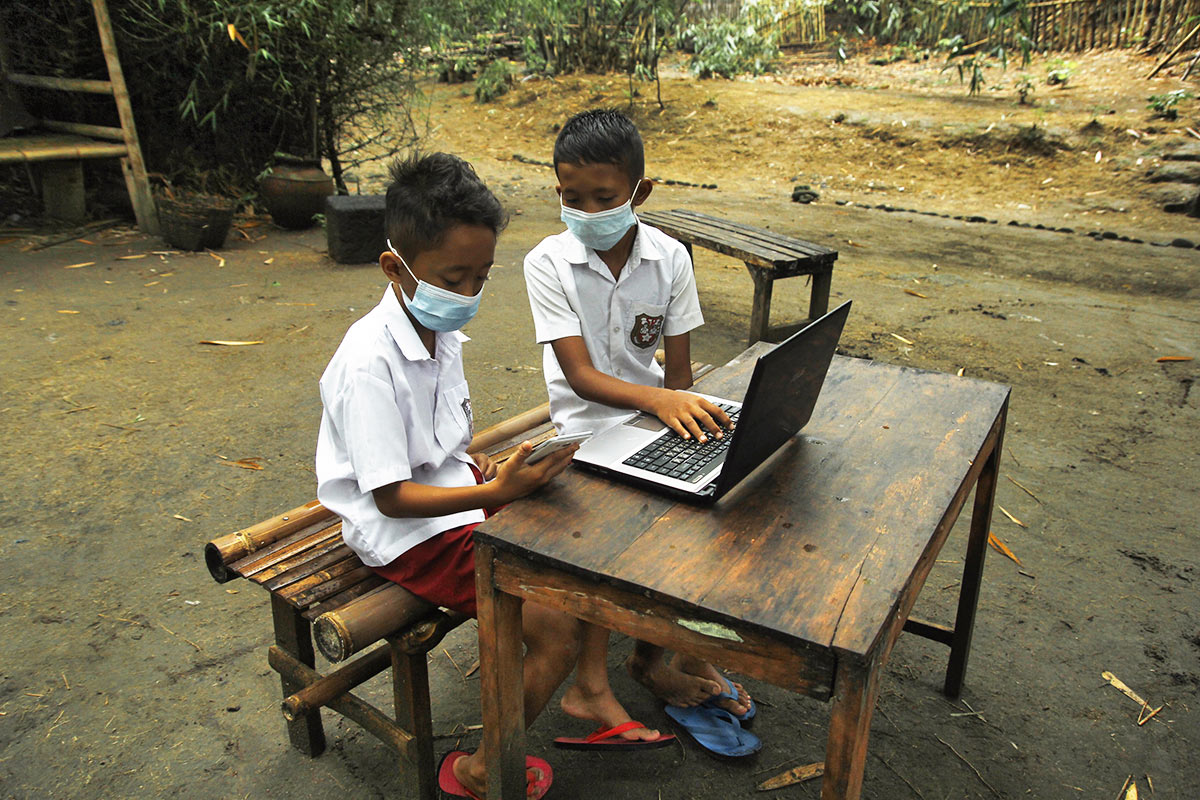
Digital Divides as a Challenge to Learning Inclusion
The adoption of ODL to achieve teaching continuity has had an adverse effect on the global effort to achieve learning inclusion, which upholds the principle that all students are entitled to impactful educational platforms with due respect given to intersectional diversity, the removal of discriminatory barriers, and the accommodation of a variety of learning needs and preferences. Even before the COVID-19 pandemic, UNESCO reported that 20 per cent of youth from around the world were excluded from such educational opportunities (UNESCO 2020: iii). The shift to ODL may have exacerbated pre-existing socioeconomic and cultural divides based on varying degrees of access to the technological platforms necessary for teaching continuity. Jaime Saavedra, the World Bank Global Director for Education, characterised the problem as such: “We were worried about learning poverty before the pandemic and also about the inequality in learning opportunities. Now the learning baseline is lower, but the increase in inequality of opportunities could be catastrophic.” (Thompson 2020)
A few of the contributors have reflected upon how the challenge of learning inclusion is a sociological and economic reality in Asia. Charlie Veric, Sensei Adorador and Lukis Alam highlight issues of inequality along center/periphery divides, depicting the extremely challenging situation of parents and students in rural universities who take on caregiving and breadwinning responsibilities. C. Y. Hoon and Mohd Sazni reflect upon the blurring and overlapping of domestic and educational roles that result from mandatory home-based learning. This is a situation that is particularly demanding for female householders for whom working from home can be “more of a curse than a blessing.”
It may be intuitive to point to a ‘digital divide’ in examining why educators have had mixed success in implementing an inclusive ODL platform, particularly in Southeast Asia (Joquino 2020; Jalli 2020). A 2019 OECD report identifies a significant divergence between high (Brunei Darussalam, Malaysia and Singapore), medium (Thailand, the Philippines and Vietnam) and low (Cambodia, Indonesia, Myanmar and Laos ) internet usage clusters within Southeast Asia (OECD 2019: 30-31). On a global scale, a UNESCO report concluded that “only a minority of countries have the basic infrastructure to focus on the pedagogical challenges of online approaches to teaching and learning.” (UNESCO 2020: 61). As both a symptom and a consequence of this digital divide, countries with substandard ICT infrastructure have relied more on lower-tech mechanisms such as radio and television, which has resulted in the suboptimal implementation of ODL. Examples from the Philippines (Salaverria 2020) and Vietnam (Hoang et.al. 2020) demonstrate that a lack of access to ICT has greatly hampered learning inclusion.
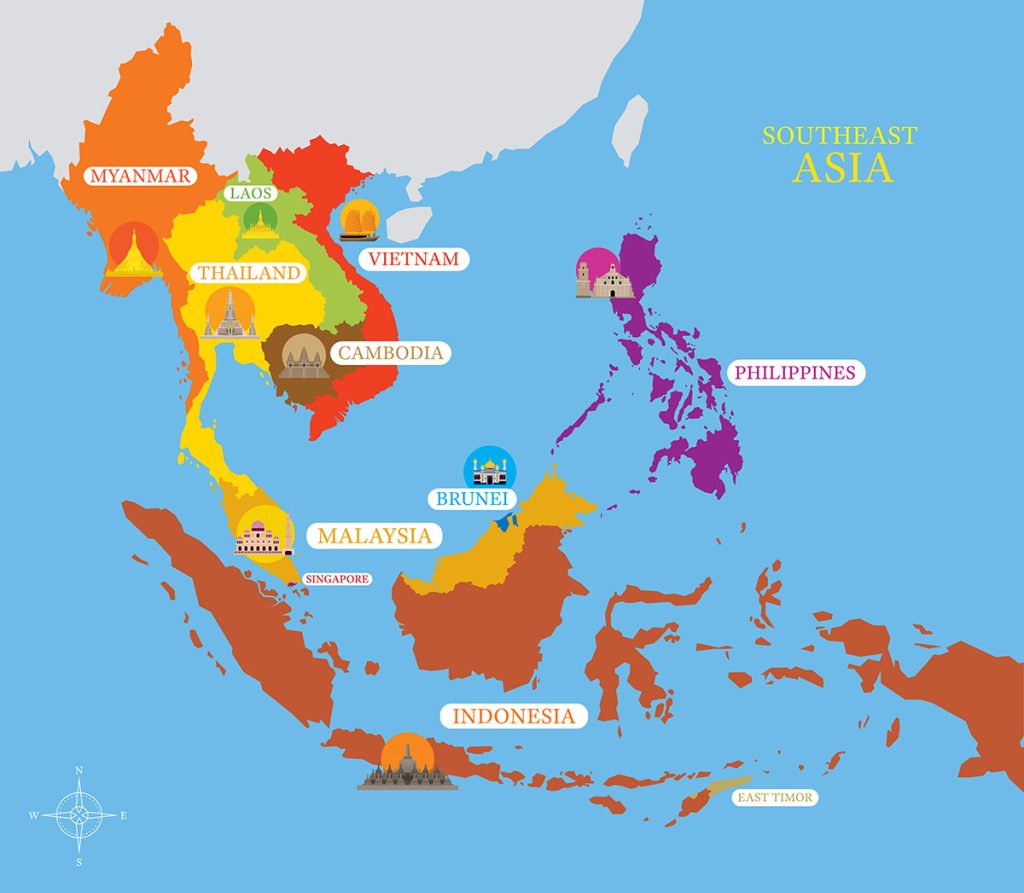
Internet Penetration Rates Alone, However, Tell Only Part of the Story
Access to appropriate devices and the speed of home-based internet are equally crucial factors that impact upon learning inclusion. A report by Google and Singapore’s Temasek Foundation (Temasek, Google 2020) indicates that 90 per cent of the 360 million internet users in Southeast Asia access the internet via their mobile phones. Amanda Liwe and Mukda Pratheep, among others, have reflected upon how their students’ reliance on smartphones prevented them from maximizing the pedagogical benefits of ODL. Moreover, the high data consumption required for online classes had effectively excluded those who access the internet based on prepaid usage. It is interesting that related problems were also reported in countries in high-usage internet clusters which have capitalized on contingency plans from established pandemic preparedness measures. My own experience in Kyoto coincides with that of C. Y. Hoon who observed that in Brunei (with 95% internet penetration) “the speed of internet connection was ranked among the top challenges faced by students.”
Another factor in evaluating the impact of ODL on learning inclusion is varying levels of digital fluency. Implementing ODL as ERT has revealed that not everyone possesses a broad knowledge of how to configure online platforms so that they are compatible with class content. A report by the ITU indicated that a lack of digital fluency in 40 out of 84 surveyed countries severely impacts the quality of internet usage (ITU 2019: 10). The essays of Ng Sue Chia and Yao Hing Wong (from Singapore) and Syanne Helly and Peter Whitfield (from Indonesia) highlight the fact that the digital fluency of faculty and students in both high and low internet usage countries cannot be assumed. As such, most contributors highlight the importance of integrating easily accessible tutorials along with curricular content as part of the pandemic pedagogy mindset.
Finally, broader institutional factors are equally significant in assessing the impact of ODL on learning inclusion. Mark Tallara, Peter Whitfield and Yao Hing Wong describe the preparedness of their institutions which have enabled a relatively easy transition to ODL practices. Similarly, Demerdzhiev’s and Santos’ reflections highlight the positive benefits of an increased level of inter-school, inter-faculty and inter-departmental coordination to mitigate the disruption of the pandemic.
Unfortunately, this is a challenge that is not consistently met in all educational institutions in the region. Sensei Adorador and Ricky Wang reflect on how the pandemic has exacerbated the bureaucratic and political dysfunction that characterizes university administrations, highlighting the importance of flexible and sympathetic academic leadership in times of crisis. Mohd Sazni and Brian Doce have discussed the larger external factors that negatively impact upon academic operations, including the corporatization of the university and its reliance on the multi-sectoral interdependence of industries.

Pandemic Pedagogy: From Triage to ‘New Normal’?
In this special issue, we have sought to collectively assess how the pandemic has affected our pedagogical capacities at a time when knowledge is ever more crucial to the propagation of our societies. This endeavor is valuable because it highlights how educators share in the same struggles and devise innovative solutions to common problems and challenges. The realization of our common predicament may then be the basis for making tentative inferences about how our pedagogical practices are changing and how they may never be the same. An intriguing notion that has come from these reflections is that our efforts to facilitate ODL-based teaching continuity has emphasized, and in some ways exacerbated, the problems of learning inclusion in Asia. It is ironic, then, that the argument for the normalization of online classes is justified on the grounds that it will improve learning inclusion, assuming that it entails a more equitable restructuring of the university’s tuition model (Villasenor 2020). These issues may not be resolved, however, while we remain in our predicament of ‘stuckedness.’ Nevertheless, these reflections may at least contribute towards a collective reimagination of the kind of learning experience we want for students and teachers. How well we as educators maximize pandemic pedagogy carries a lot of weight in determining whether the pandemic will be the kind of disruptive innovation (Christensen et.al. 2015) that is necessary to take education forward in the post COVID-19 world.
Julius Bautista
Guest Editor: Kyoto Review of Southeast Asia – Issue 29
Julius Bautista is an associate professor at the Center for Southeast Asian Studies, Kyoto University.
**Acknowledgement: This special issue of the Kyoto Review of Southeast Asia is a joint venture by members of the Consortium for Southeast Asian Studies in Asia (SEASIA) and the Japan-ASEAN Platform for Transdisciplinary Studies. The editors would like to acknowledge the support of these two institutions in facilitating this endeavor.**
Articles
Enhancing the eLearning “White Space” in a Fully-Online Southeast Asian Studies Course at De La Salle University
Mark Inigo M. Tallara, De La Salle University (DLSU)-Manila, Philippines
Social Considerations-and-Constraints of Online Teaching-and-Learning: A Digital Native’s Reflection
Sue Chia Ng, doctoral pre-candidate, the National Institute of Education, Singapore
The Impact of the Pandemic on Our Operations within the Johann Sebastian Bach Music Academy
Nikolay Demerdzhiev, Johann Sebastian Bach Music Academy, Hong Kong
Shifting Knowledge Authority from School to Home: Education Anxiety in the Pandemic Era
Lukis Alam, National Institute of Technology, Yogyakarta (ITNY), Indonesia
Discerning Truth in a Time of Pandemic: Reflections from a Filipino Jesuit School
Franz Jan S. Santos, Ateneo de Manila University (and senior high school), Philippines
Some Negative Impacts for University Students During Pandemic 2020
Makibi Nakano & Kumiko Kato, PhD candidates, Kyoto and Sophia Universities, Japan
Teaching in Times of Global Disruption
Amelia Joan Liwe, Lecturer, International Relations, Universitas Pelita Harapan, Indonesia
Teaching Pandemic History During a Pandemic Present
Michael G. Vann, California State University, Sacramento, USA
The Pandemic and East Asian University Internationalization: The Southern Taiwan-Philippine Experience
Brian U. Doce, De La Salle University International Studies Department, Philippines
Addressing the Challenges in Implementing Online Learning During the Pandemic in Indonesia
Syanne Helly, high school teacher and International Baccalaureate coordinator
The Trial of Philippine Studies
Charlie Samuya Veric, associate professor of English, at Ateneo de Manila University, Philippines
Compression of Space: Reflection on Teaching During Pandemic Pedagogy
Mohd Sazni Ahmad Salehudin, Faculty of Film Theatre and Animation (FiTA), Universiti Teknologi MARA (UiTM), Malaysia
Introducing EdTech to the Classroom – A Reflective Piece
Peter J. Whitfield, Tzu Chi School, Jakarta, Indonesia
Engaging Hearts and Engaging Minds: Teaching Sociology in Japan during the Pandemic
Allen J. Kim & Johanna O. Zulueta, associate professors, International Christian University, Tokyo, and Soka University, Tokyo, Japan.
Teaching Public Policy Communications at a Singapore University during COVID-19 and Beyond
Yao Hing Wong, Lee Kuan Yew School of Public Policy, Singapore
Finding a Balance between Comfort Zone and a “New Normal” Way of Teaching Online
Mukda Pratheepwatanawong, Mekong Studies Center, Institute of Asian Studies, Chulalongkorn University, Thailand.
Academic Servant Leadership during the COVID-19 Pandemic: A reflection from Indonesia
Ricky Wang, Petra Christian University, Indonesia
What Is To Be Done? A Reflection of an Academician from the Below
Sensei M. Adorador, Carlos Hilado Memorial State College-Talisay City, Negros Occidental and University of the Philippines- Visayas
“Keep Annabelle in the Closet!”: Reflections on Online Teaching during COVID-19 in Brunei Darussalam
Chang-Yau Hoon, Centre for Advanced Research (CARe), Universiti Brunei Darussalam
Assumptions, anticipations, imaginations and impact of Pandemic Pedagogy
Sudebi Thakurata, Depicentre Consulting, and Srishti Institute of Art, Design and Technology, India
Notes:
- For a consolidated account of how countries around the world are utilizing Educational Technology (EdTech) to confront the COVID-19 pandemic, see the World Bank Edtech Team (World Bank 2020) and UNESCO (UNESCO 2020b). ↩


